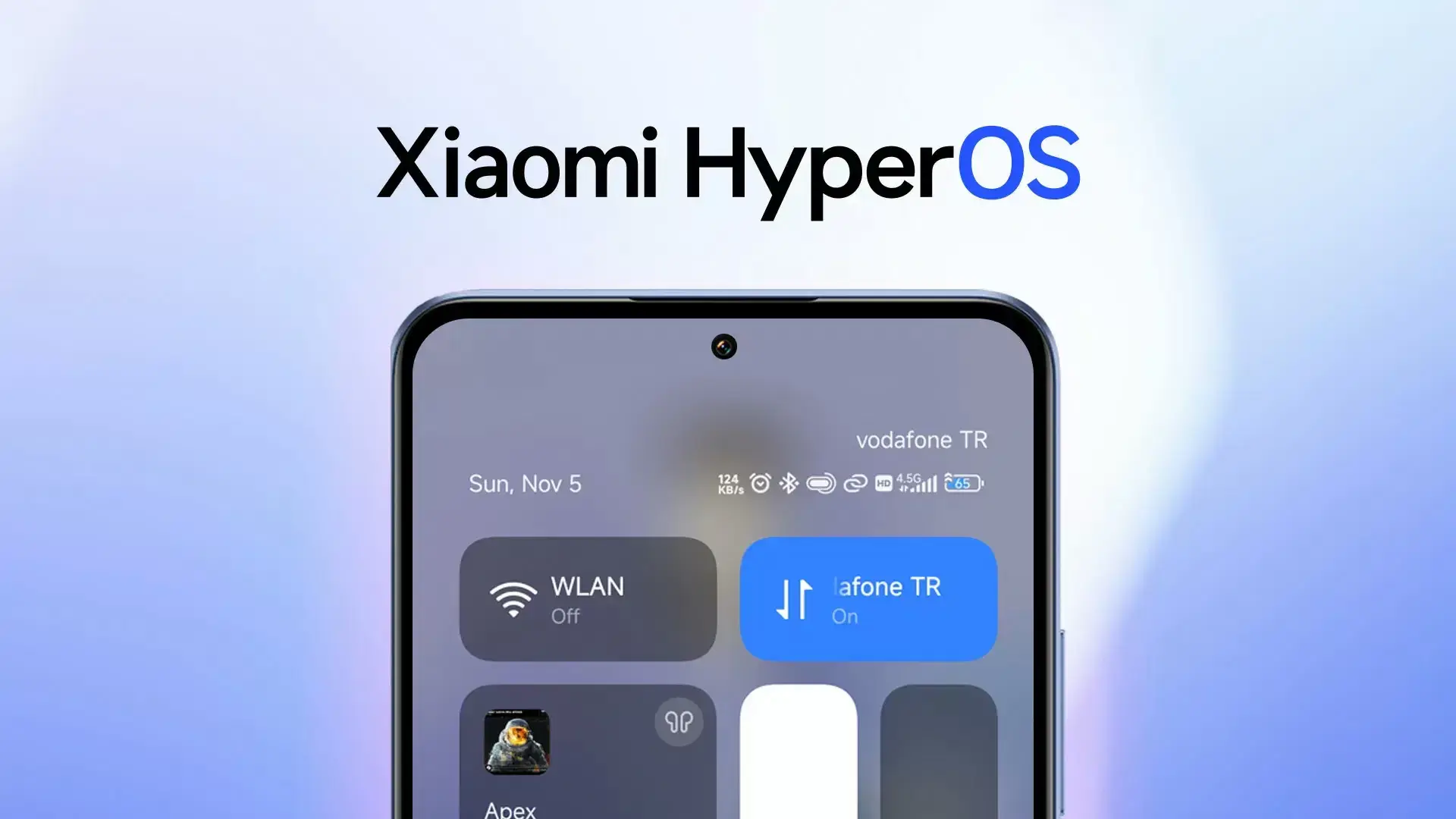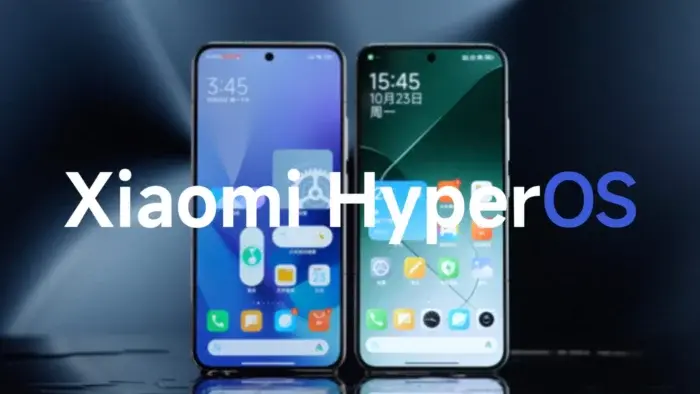Image source: GSMChina
Xiaomi users across the globe rejoice! HyperOS, the company’s new operating system designed to unify its device ecosystem, is nearing its arrival on the popular Redmi Note 11 series. This article delves into the details of this update, examining its significance, potential benefits, and limitations.
Xiaomi Redmi Note 11 to Receive HyperOS Soon: What You Need to Know

HyperOS: Unifying the Xiaomi Universe
HyperOS transcends the realm of mere custom layers. It represents a paradigm shift, ushering in a unified operating system experience across diverse Xiaomi devices, including smartphones, tablets, and wearables. This strategic move aims to streamline user experience and foster seamless interaction within the Xiaomi ecosystem.
Redmi Note 11 Joins the HyperOS Party
Adding to the excitement, the Redmi Note 11 series has officially secured its spot in the initial rollout of HyperOS updates, slated for late February 2024. This news comes courtesy of the reliable source, Xiaomiui, raising anticipation among Redmi Note 11 users worldwide.
Unpacking the Update: OS1.0.1.0.TGCMIXM
Specifics of the Redmi Note 11 update paint a clearer picture. Version OS1.0.1.0.TGCMIXM promises a global rollout, ensuring worldwide accessibility. However, it’s important to note that this iteration of HyperOS for the Redmi Note 11 will be based on Android 13, meaning it won’t directly enjoy the features of the latest Android 14.
Android 13 for Some, 14 for Others: Navigating the HyperOS Update Strategy
Xiaomi’s update strategy reveals an interesting nuance. While over 100 devices across its brands will receive HyperOS based on the cutting-edge Android 14, others, including the Redmi Note 11, will experience it on the Android 13 foundation. This ensures wider compatibility with older devices, allowing them to access the benefits of HyperOS without being limited by outdated hardware.
Benefits of HyperOS on the Redmi Note 11
Despite not sporting the latest Android version, the arrival of HyperOS on the Redmi Note 11 is still positive news. Users can expect an enhanced user interface, improved battery management, and optimized notification systems. These advancements contribute to a smoother, more efficient, and enjoyable user experience.
Stay Informed: Checking Compatibility and Unveiling Further Updates
For those unsure about their device’s compatibility with HyperOS, utilizing the dedicated application mentioned in the original article is highly recommended. As HyperOS continues its rollout, additional information regarding future updates and eligible devices is likely to emerge. Stay tuned for further developments in this exciting journey towards a unified Xiaomi experience.

Xiaomi’s HyperOS: A Deep Dive into its Features and Future Potential
Xiaomi’s recent launch of HyperOS has sent ripples through the tech world, promising a “human-centric” experience that seamlessly connects personal devices, cars, and smart home products. But beyond the marketing buzz, what are the key features that define HyperOS, and how do they translate into user benefits? This article delves deeper, exploring the highlights and analyzing their potential impact.
Connecting the Fragmented Landscape:
At its core, HyperOS aims to bridge the gap between individual devices, creating a unified ecosystem. This is achieved through several key features:
- Universal Control Center: Imagine controlling your Xiaomi phone, smartwatch, and smart TV from one central hub. HyperOS’s Control Center does just that, allowing seamless device switching and management – a significant step towards a cohesive user experience.
- Cross-Device Continuity: Picking up a task on one device and continuing it on another becomes effortless. Start an email on your phone, switch to your laptop, and HyperOS ensures a smooth transition, eliminating context switching hurdles.
- Smart Home Integration: Xiaomi’s extensive smart home offerings seamlessly integrate with HyperOS. Control lights, set thermostats, or view security cameras, all directly from your HyperOS-powered device, creating a truly connected living space.
Intelligence Amplified:
HyperOS leverages large foundation models, unlocking powerful AI capabilities:
- Enhanced AI Assistant: Forget voice commands; HyperOS’s assistant understands natural language, facilitating complex requests and even generating text on your behalf. Need a meeting summary or an email draft? Just ask.
- Smart Search: Forget sifting through folders; HyperOS understands the relationships between your data across devices. Search for an image using spoken keywords, or find specific content within videos through real-time transcription – intelligent search elevates everyday tasks.
- AI-Powered Creativity: Unleash your artistic side with HyperOS. Generate images based on existing portraits, or let the AI suggest creative edits for your photos.
Enhanced Productivity and User Interface:
HyperOS isn’t just about connectivity and intelligence; it prioritizes user experience:
- Improved Window Management: Multitasking gets a boost with a new window controller, allowing effortless resizing and independent opening/closing of split-screen windows. Large screens become true productivity powerhouses with the “Workstation” feature.
- Refined Design: HyperOS boasts a visually appealing interface with smooth animations and customizable lock screens. It borrows inspiration from other popular operating systems while maintaining a distinct Xiaomi identity.
- Performance Optimization: Xiaomi claims significant performance improvements, with faster app launch times and smoother overall operation. This is crucial for maintaining a responsive and enjoyable user experience.
Beyond the Hype: Unanswered Questions:
While HyperOS presents intriguing possibilities, some questions remain:
- Device Compatibility: While initially launched on the Xiaomi 14 Series and select other devices, the rollout plan for older models remains unclear. Will legacy users be left behind?
- App Ecosystem: Building a robust app ecosystem is crucial for long-term success. How will Xiaomi attract developers and ensure a diverse range of apps on HyperOS?
- Security and Privacy: Integrating multiple devices raises security concerns. How does HyperOS address data privacy and ensure user information is protected across the ecosystem?
Conclusion: A Promising Start, but the Journey Continues:
So, Xiaomi’s HyperOS marks a bold step towards a more interconnected and intelligent user experience. Its focus on device unification, AI integration, and improved user interface holds immense potential. However, the platform’s long-term success depends on addressing device compatibility concerns, fostering a thriving app ecosystem, and prioritizing user privacy and security. As HyperOS evolves, keeping a close eye on its development and impact will be crucial in understanding its role in the future of mobile technology.





